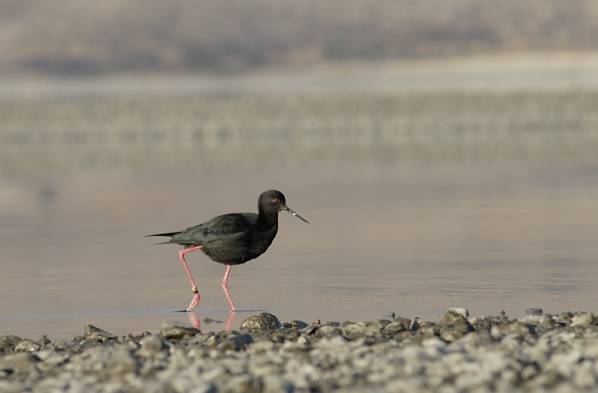UC scientists dispel long-held fallacy about NZ black stilt
Thursday 4 November 2010, 11:06AM
602 views
Scientists at the University of Canterbury have found evidence that one of the world’s rarest birds, the New Zealand black stilt or kakī, is a genetically distinct species and thus worthy of protection.
The University researchers, working with Dr Richard Maloney from the Department of Conservation’s Kakī Recovery team, have found that contrary to popular belief, this critically endangered wading bird does not represent a hybrid swarm.
UC conservation geneticist Dr Tammy Steeves (Biological Sciences), who led the research team, said the introduction of predators and widespread habitat loss and degradation have driven the species close to extinction with only 98 adult birds in the current population, found mainly in the Mckenzie Basin. It has also been suggested that breeding, or hybridisation, with the self-introduced pied stilt, or poaka, also contributed to the species’ decline and that kakī will eventually hybridise to extinction.
However, Dr Steeves said the extinction risk associated with hybridisation between native kakī and non-native poaka was, until now, unknown. For example, it was unclear whether birds with all black plumage, currently classified as kakī, are indeed kakī or if they are merely kakī -poaka hybrids in disguise.
The research team carried out a genetic census of nearly every individual kakī and showed that birds classified as kakī based on plumage are genetically kakī: excluding one individual, none of the birds had poaka DNA.
“These results are both surprising and exciting,” said Dr Steeves. “Because kakī-poaka hybrids can breed with either kakī or poaka, we expected to find many more ‘cryptic’ hybrids, or birds that appear to be one species but actually have DNA from both species.”
Dr Steeves said the research team attributed this surprising result, in part, to the reduced reproductive success in female kakī-poaka hybrids and a transient male-biased kakī sex ratio.
“Our findings have important ramifications for the conservation management of kakī,” said Dr Steeves.
Since 1999 kakī had been actively prevented from breeding with non-kakī and the research team said this management strategy should continue to maintain the genetic integrity of kakī.
“However, because the number of kakī is increasing and the number of kakī-poaka hybrids is decreasing, there are fewer kakī – non-kakī pairs in the Mackenzie Basin each year. The best thing we can do to ensure the recovery and survival of kakī is to continue using innovative conservation management strategies to increase the population size of this iconic species.”
The team’s findings have recently been published in Molecular Ecology in a paper titled “Genetic analyses reveal hybridisation but no hybrid swarm in one of the world’s rarest birds”. Other researchers involved in the project were UC’s Dr Jason Tylianakis and Dr Marie Hale (Biological Sciences), and Otago University’s Professor Neil Gemmell.
